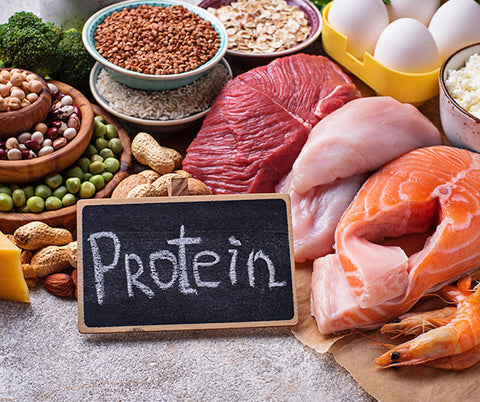Deflate the belly: abdominal swelling is one of the most common gastrointestinal symptoms in the general population, it affects all ages and affects between 10 and 13% of the population.
The annoying feeling of having a bloated belly can negatively affect our daily well-being.
Abdominal swelling can be caused by a variety of reasons, but there are many natural remedies and eating habits that can help reduce this annoying condition.
In this article, we will explore what it means to have a bloated belly, its possible causes, and a series of effective strategies to deflate it and improve digestive comfort.
What is Belly Bloat?
A bloated belly is a condition in which the abdomen appears and feels more distended, and indeed swollen, than normal. This unpleasant sensation is often associated with discomfort and fullness.
Up to 96% of patients with irritable bowel syndrome (IBS) report bloating and abdominal distension, with these symptoms often coexisting; however, abdominal distension is reported by only 50-60% of patients with bloating.
Abdominal swelling or flatulence?
The term abdominal swelling today replaces the old synonym meteorism and is adopted as a translation of the English “bloating”, meaning a recurring (subjective) sensation of abdominal fullness, pressure, or gas trapped in the intestine.
Abdominal distension is defined as a measurable increase in abdominal circumference, and only 50-60% of patients with abdominal swelling also have distension.
What Causes a Bloated Belly?
Abdominal bloating can have many causes, but it is particularly prominent in patients with Irritable Bowel Syndrome (IBS). Studies suggest that 10% of the European population suffers from chronic abdominal bloating disorders.
Women appear to be more susceptible, with a ratio of 2:1 compared to men. Ingested food plays a key role in the pathophysiology of gut-brain disorders, as up to 84% of patients with irritable bowel syndrome (IBS) report symptoms triggered by food.
Another factor that often contributes is the presence of an unbalanced intestinal environment, which can increase the fermentation of certain types of carbohydrates, known as FODMAPs (Fermentable Oligosaccharides, Disaccharides, Monosaccharides, and Polyols), leading to expansion of the intestinal lumen.
Therefore, following a low FODMAP diet may not be a permanent solution, but rather a temporary way to relieve symptoms.
On the other hand, certain more complex carbohydrate molecules, which are not adequately digested or absorbed in the small intestine, can extend into the colon through the production of hydrogen and methane due to fermentation by intestinal bacteria.
A recent study found that after eating foods containing FODMAPs, both respiratory hydrogen and colon dilation measured by MRI were increased in both IBS patients and people without the condition.
This suggests that, regardless of the presence of conditions such as irritable bowel syndrome (IBS) , an individual with an unbalanced gut microbiota may experience excessive fermentation. Therefore, it is essential to include a therapeutic approach that aims to improve the composition of the gut microbiota in any strategy aimed at improving the situation.
Chosen for you 👉 Lose weight fast: a complete guide to success
What to Do in Case of Abdominal Bloating?
When dealing with abdominal bloating, there are practices and habits that can help provide relief.
Eating slowly and chewing well can improve digestion , while limiting the intake of carbonated foods can reduce the formation of gas in the intestines. Regular physical activity is another key element to improve intestinal motility and prevent bloating.
Examples of exercises against abdominal swelling
First exercise
- Lie down on the floor, relax your arms and legs and take at least 5 deep breaths. Inhale and then let the air slowly come out through your nose.
- Bring your knees toward your chest, trying to wrap your arms around them. You should not force the movement or feel pain. Go as far as you can and then take another 5 deep breaths.
- At this point, rotate your torso to the left, lowering your legs to the side, which should continue to be bent. Your face and right arm will instead look to the opposite side (to the right). Slowly descend and when you are in position, take another 5 breaths.
- Now repeat the exercise on the other side.
Second exercise
- Legs bent and spread apart and toes pointing outwards, the same position you would assume if you were using a squat toilet, so knees bent and bottom low.
- Don't worry if your heels don't touch the ground, they can be left raised or you can put a support under your heels to be more comfortable.
- Now lean your torso forward as if you were trying to touch the ground with your head and relax your neck muscles. Don't pull, just let your head follow the force of gravity. Your hands can grab your ankles or stay out in front of you.
Now take deep breaths for at least 10 times.
Read also 👉 5 good reasons to train in the morning
Functional abdominal bloating and distension (FABD)
The pathogenesis of FABD is complex, often multifactorial in nature, and not fully understood. Altered microbiota, abnormal gastrointestinal motility, abdominophrenic dyssynergia, pelvic floor dysfunction, and visceral hypersensitivity are possible factors involved in the pathophysiology of this condition.
When addressing this condition, it is essential to perform a comprehensive evaluation of the major secondary etiologies of FABD (Table 1).
| TABLE 1 Differential diagnosis of abdominal swelling |
| Dietary |
| Excess of gas-producing foods |
| Malabsorption |
| Celiac disease |
| Lactose and fructose intolerance |
| Pancreatic insufficiency |
| Functional gastrointestinal diseases |
| Irritable bowel syndrome |
| Functional dyspepsia |
| Functional swelling/distension |
| Chronic idiopathic constipation |
| Motility disorders |
| Diabetes |
| Systemic sclerosis |
| Chronic intestinal pseudoobstruction |
| Gastroparesis |
| Acute adynamic ileus |
| Medications (e.g., loperamide, opioids, and insoluble fiber supplements) |
| Intestinal obstruction (mechanical) |
| Tumors and Cysts |
| Gastrointestinal |
| Urogenital |
| Ascite |
| Infectious |
| Overgrowth of bacteria in the small intestine |
| Giardiasi |
| Psychological |
| Anxiety (aerophagia) |
| Physiological |
| Pregnancy |
| Adiposity |
⚠️ Gut-brain interaction disorders (GBD) affect approximately 40% of the world's population
Dietary Approaches to Manage Abdominal Bloating
In recent years, there has been a significant increase in clinical studies aimed at understanding the relationship between dietary interventions and functional gastrointestinal disorders.
There is growing evidence that food-induced symptoms may result from hypersensitivity to intestinal lumen distension, which may be further compromised by the ingestion of foods that are difficult to digest and absorb, such as many modern foods that have undergone improper modification.
Here are some changes that modern foods may have undergone:
- Genetic Modification : Genetic manipulations can alter the genetic makeup of foods, leading to unwanted variations in nutritional characteristics or safety profiles.
- Excessive Thermal Modifications: Excessive heat treatment during food preparation or storage can compromise nutritional value, texture, flavor, and digestibility.
- Chemical Contamination: Residues of harmful chemicals, such as pesticides or heavy metals, can alter the chemical composition of foods and their proper assimilation.
- Irradiation: Uncontrolled irradiation can lead to improper changes in the molecular structure of foods, affecting safety and quality.
- Addition of Unapproved Additives: The use of unauthorized food additives or those outside the permitted limits can pose health risks and affect the organoleptic characteristics of food.
- Uncontrolled Microbiological Changes: The uncontrolled action of unwanted microorganisms can cause alterations in the taste, odor and safety of foods, also compromising the digestive system.
- Exposure to Unauthorized Radiation: Unauthorized exposure to radiation, such as ultraviolet rays or microwaves, can lead to unwanted changes in the properties of foods.
Do you want to know what the right diet is to help you deflate your belly?
Access our online nutritional test now to receive specific nutritional advice and a personalized meal plan that will help you live a healthy life.
Take control of your life and adopt a proactive approach to health and nutrition.
TAKE THE NUTRITIONAL TESTFoods That Make Your Belly Bloat
Given the lack of definitive evidence on symptom improvement with specific diets in Functional Abdominal Distention (FABD), current dietary prescriptions are mainly based on an empirical approach.
One possible approach for patients with Functional Abdominal Distention (FABD) is to eliminate foods that are known to cause belly bloating, such as:
- Onions
- Legumes
- Cauliflower
- Celery
- Bananas
- Apricots
- Plums
- Broccoli
- Wheat bran
Additionally, healthy eating habits are recommended, such as eating regular meals and limiting alcohol, coffee, and spicy foods. Patients are often advised to eliminate specific foods that trigger gastrointestinal symptoms .
Low FODMAP Diet (LFD) and the Gluten-Free Diet (GFD)
In addition to these general approaches, the two most commonly adopted dietary prescriptions for patients with Functional Abdominal Distention (FABD) are the Low FODMAP Diet (LFD) and the Gluten-Free Diet (GFD).
However, it is important to emphasize that the effectiveness of these diets may vary from individual to individual, and the choice between different options should be based on a careful assessment and personalized response of the patient.
Gluten-free diets have shown positive results, which may be attributed to the fact that the type of gluten present in modern durum wheat varieties is significantly more complex than that found in ancient varieties (prior to the 1970s).
This glutinous complex in modern varieties hinders proper decomposition by digestive enzymes.
Therefore, the indiscriminate elimination of any food containing gluten may represent an inaccurate generalization, with the risk of needlessly compromising the nutritional value of the diet . It would be enough to try using foods made with ancient durum wheat varieties such as Cappelli or Saragolla.
Gluten-Free Diet (GFD)
The gluten-free diet can present some potential challenges. By eliminating gluten, patients may limit the diversity, balance, and nutritional value of their diet, as gluten-free products often lack fiber, vitamins, and other essential micronutrients such as calcium, iron, and magnesium .
However, it is important to note that many gluten-free products on the market are now fortified to mitigate this risk of nutritional imbalances. Some studies have shown higher levels of lipids, trans fats, proteins, and salt in processed gluten-free products .
Additionally, a gluten-free diet can present additional challenges. Although the overall impact on cardiovascular health is not yet fully understood, several studies indicate increased levels of total cholesterol, high-density lipoprotein cholesterol, fasting blood glucose, and body mass index among those on a gluten-free diet.
Therefore, to ensure the safety and effectiveness of this diet, it is advisable that the decision to adopt it be evaluated by a specialized gastroenterologist. In addition, for optimal dietary planning and to avoid nutritional deficiencies or malnutrition problems, it is advisable to receive the guidance of a nutritionist or dietitian.
What Not to Do if I Have a Bloated Belly?
Avoiding certain habits can significantly help manage abdominal bloating.
- Rapid food ingestion
- excessive consumption of foods rich in sodium
- intake of carbonated drinks
- consumption of ultra-processed foods
- consumption of foods made with genetically modified raw materials
An increase in dietary sodium intake was shown to increase bloating, as was adherence to a high-fiber diet.
Although healthy, high-fiber diets can potentially cause increased bloating, these effects can be partially mitigated by reducing sodium intake.
In all cases, increased sodium intake increased bloating in a dose-dependent manner, regardless of diet type.
Remedies for abdominal swelling
To combat abdominal swelling, there are various effective remedies.
An important first step is the adoption of digestive herbal teas, which can be composed of herbs such as chamomile, fennel, mint or ginger, known for their anti-inflammatory and carminative properties, aid digestion and help relax the gastrointestinal tract.
Additionally, eating healthy, balanced foods that include a variety of fruits and vegetables, whole grains, and lean protein sources is essential to deflate your belly.
Foods or supplements rich in probiotics are particularly recommended to restore the balance of intestinal flora, which plays a key role in managing bloating.
Another useful trick is to massage the abdomen with essential oils, such as lavender or peppermint, because they can stimulate digestion and relieve discomfort.
It is also important to reduce the consumption of foods that can irritate the intestines or cause gas retention, such as those listed in the previous paragraphs. Natural supplements such as our PRO-BIO24 can also help you.
PRO-BIO24Try Pro-Bio24 now 👇
Buy NowWhat to eat to deflate your belly?
Adopting a balanced diet is essential to manage abdominal swelling, in particular some foods can bring benefits for a bloated belly more than others. Let's see which ones.
- Ginger. A true superfood, it is known for its anti-inflammatory properties and can aid digestion, reducing the feeling of heaviness and bloating.
- Pineapple, thanks to the presence of the enzyme bromelain, also helps to dispose of proteins, lightening the load on the digestive system.
- Yogurt with probiotics, as already mentioned, is excellent for rebalancing the intestinal flora, improving digestive health and reducing bloating.
- Cucumbers, rich in water and low in calories, are an excellent choice for those looking for a natural diuretic effect and help in the digestive process.
Additionally, it is advisable to include foods rich in fiber, such as fruits, vegetables, and whole grains, which promote intestinal regularity and help prevent constipation, often associated with abdominal swelling. However, remember to introduce fiber gradually to avoid a sudden increase in swelling.
Last but not least, it is essential to maintain adequate hydration by drinking plenty of water throughout the day, to aid digestion and prevent fluid retention, which can contribute to bloating.
Best Product to Deflate Belly
The choice of the best product to deflate the belly should be oriented towards natural and safe solutions. However, there is no product that is better than others, considering that the causes of swelling are often multiple.
Therefore, an effective approach should start with proper nutrition, which includes the consumption of healthy foods.
The use of anise, thyme and marjoram can also be beneficial , as they have antispasmodic and relaxing properties on the intestinal smooth muscles.
To reduce abdominal swelling, it is particularly useful to integrate foods or supplements rich in high-quality probiotics into your diet, drink herbal teas such as chamomile, and perform abdominal massage with fennel, anise, and peppermint oils .
Sources:
- Review Front Nutr. 2022 Nov 8:9:1007716. doi: 10.3389/fnut.2022.1007716.
- The low-FODMAP diet and the gluten-free diet in the management of functional abdominal bloating and distension
- Adv Ther. 2019; 36(5): 1075–1084. doi: 10.1007/s12325-019-00924-7
- Bloating and Abdominal Distension: Clinical Approach and Management
- Am J Gastroenterol. 2019 Jul; 114(7): 1109–1115. doi: 10.14309/ajg.0000000000000283
- Effects of the DASH Diet and Sodium Intake on Bloating: Results From the DASH–Sodium Trial
- BMC Complement Med Ther. 2023; 23: 373. doi: 10.1186/s12906-023-04197-0
- Integrated traditional herbal medicine in the treatment of gastrointestinal disorder: the pattern of use and the knowledge of safety among the Eastern Region Saudi population



